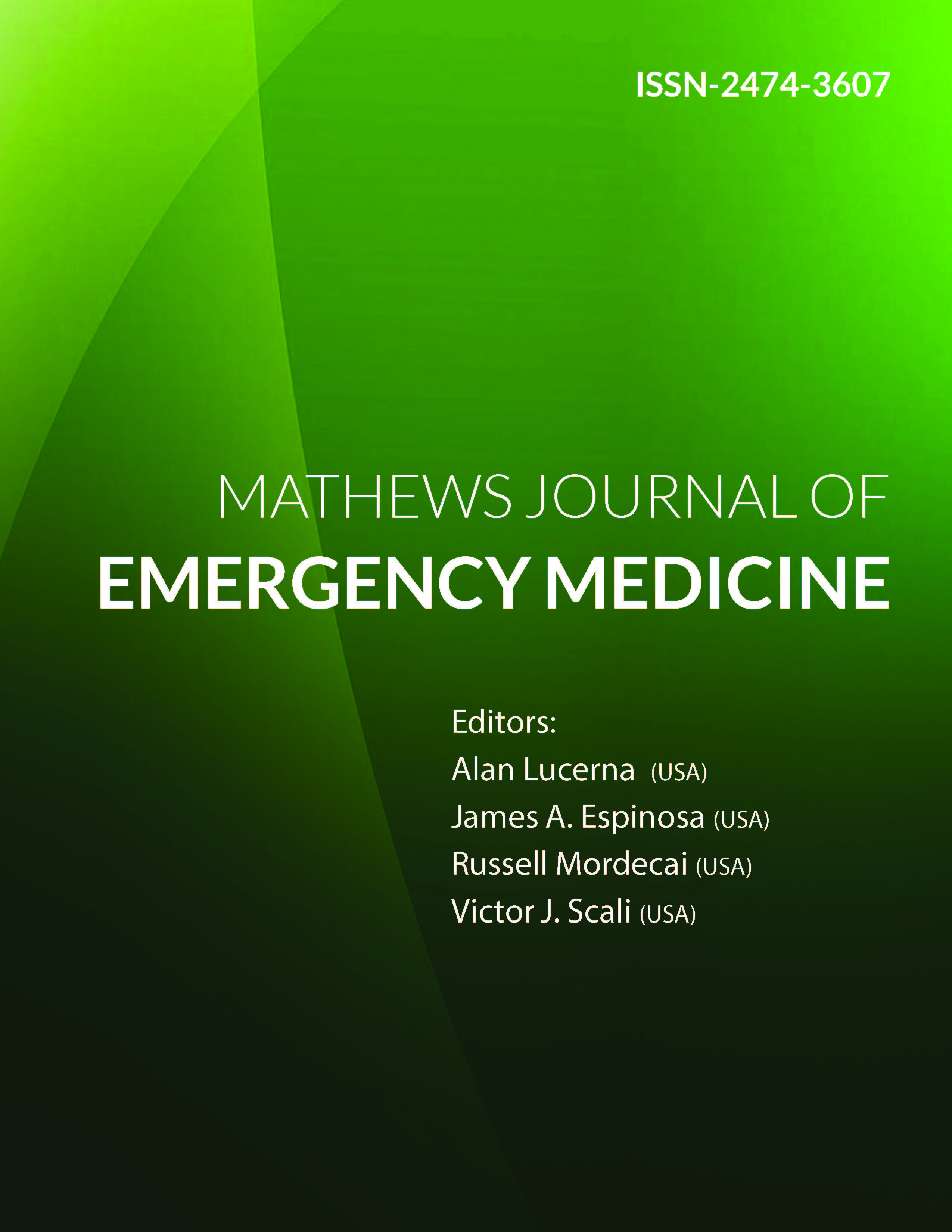
Information Links
Previous Issues Volume 8, Issue 2 - 2023
Weather and Migraine: Is there a Relationship between Barometric Pressure Change and ED Migraine Visits?
Tessa Ndille1, James Espinosa2,*, Themy Ngo3, Syrita Farrow4, Alan Lucerna2, Victor Scali5, Henry Schuitema6
1Department of Emergency Medicine, Vassar Brothers Medical Center Poughkeepsie, NY, USA
2Department of Emergency Medicine, Jefferson NJ, Stratford, NJ, USA
3Department of Emergency Medicine, Baylor Scott & White Medical Center, Waxahachie, Texas, USA
4Department of Emergency Medicine, Virtua Voorhees Hospital, Voorhees, NJ, USA
5Director of Problem-Based Learning and Faculty, Rowan-Virtua SOM School of Medicine, Stratford, NJ, USA
6Chief, Department of Emergency Medicine and Associate Chief Medical Officer, Jefferson NJ, USA
*Corresponding Author: James Espinosa, Department of Emergency Medicine, Rowan University SOM/Jefferson, 18 East Laurel Road, Stratford, NJ 08084; Email: [email protected]
Received Date: June 16, 2023
Publication Date: July 3, 2023
Citation: Ndille T, Espinosa J, Ngo T, Farrow S, Lucerna A, Scali V, Henry Schuitema H. (2023). Weather and Migraine: Is There a Relationship Between Barometric Pressure Change and ED Migraine Visits? Mathews J Emergency Med. 8(2):58.
Copyright: Ndille T, et al. © (2023)
ABSTRACT
Background: Migraine headache is one of the most common causes of chronic headaches. Many internal and external triggers for migraine episodes have been identified. Weather as a migraine trigger has been reported as the most common trigger and as the 4th most common trigger. Aim of Study: The purpose of our study was to look for a relationship between barometric pressure and migraine presentations. Materials and Methods: The study design was a retrospective chart review. A random sample of 50 days was selected for the study. A random number generator was used to select the random dataset. Weather data from those days included the variable of mean barometric pressure on the index (study) day, from the previous day and from the following day. The barometric pressure was obtained from a national online weather database. [weatherunderground.com] The barometric pressure was recorded in inches of mercury. Emergency department data from the index day, the preceding day and the following day was obtained from a three-community hospital/University affiliated system in reference to the number of migraine headache patients seen in the emergency department for the 24 hours of the 50 study days. For each study day, all patients with a diagnosis of migraine headache were also included. In addition, the number of patients with a diagnosis of headache, of any unspecified type was studied. Patients less than 18 years of age, patients with trauma, fever, stroke or a diagnosis of meningitis were excluded. Means for barometric pressure were calculated for the index day as well as the preceding and following day. Migraine data and overall headache data were compared for above average and below average barometric pressure days for the index days. Changes in barometric pressure between the day preceding and the day following the index day were studied. Results: There were more migraine patients seen on days with above-mean barometric pressure than on days with below mean barometric pressure. This difference was statistically significant (P-value=0.02) using the parametric measure of the Two-Sample T-Test and Confidence Interval as well as with a non-parametric measure of the Mann-Whitney Test and Confidence Interval, (P-value=0.01). Conclusions: Our data showed a correlation between days with higher barometric pressure and migraine presentations. This finding is consistent with some migraine studies and is inconsistent with others. Possible theories to explain the differences in these findings have been proposed in the literature, including differences in methodology, possible differences in subsets of patients and the conflicting influence of other weather variables. We did not find a relationship between migraine presentations and changes in barometric pressure from the day prior to the study day, or from the study day to the following day. We saw no relationship between barometric pressure and non-migraine headache presentations.